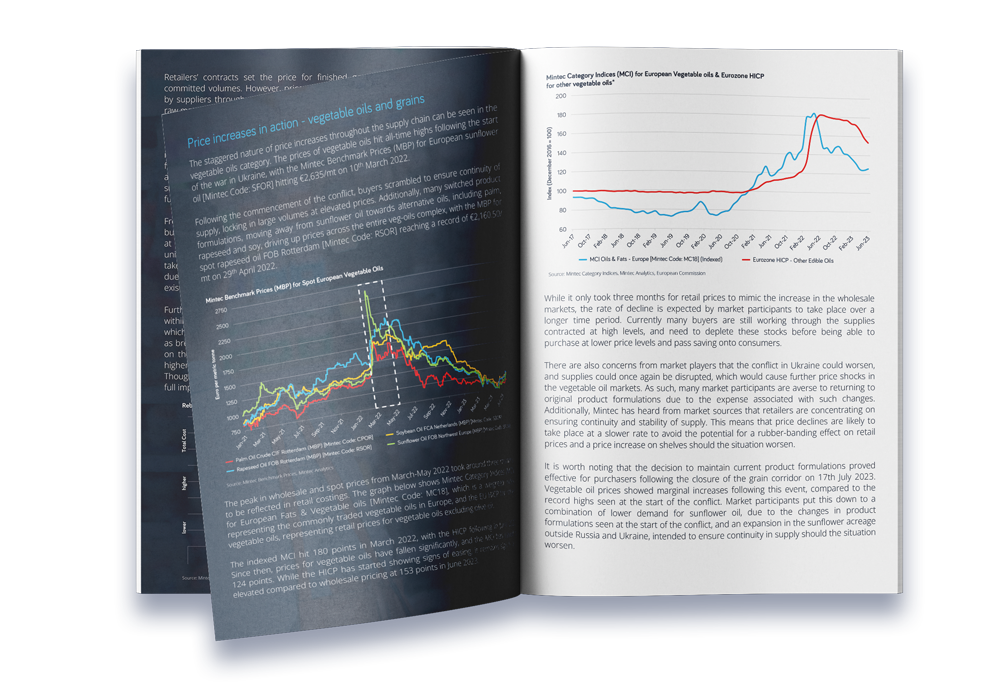-
 Expect prices for finished goods to stabilise at higher levels than those seen before the start of the Ukraine-Russia conflict.
Expect prices for finished goods to stabilise at higher levels than those seen before the start of the Ukraine-Russia conflict.
-
 Crops which are grown under contract, rather than sold on a free-market, prices are expected to remain elevated in the coming season (2023/24)
Crops which are grown under contract, rather than sold on a free-market, prices are expected to remain elevated in the coming season (2023/24)
-
 Declines in wholesale markets will take time to filter through to a retail level and longer for stabilisation to occur.
Declines in wholesale markets will take time to filter through to a retail level and longer for stabilisation to occur.
